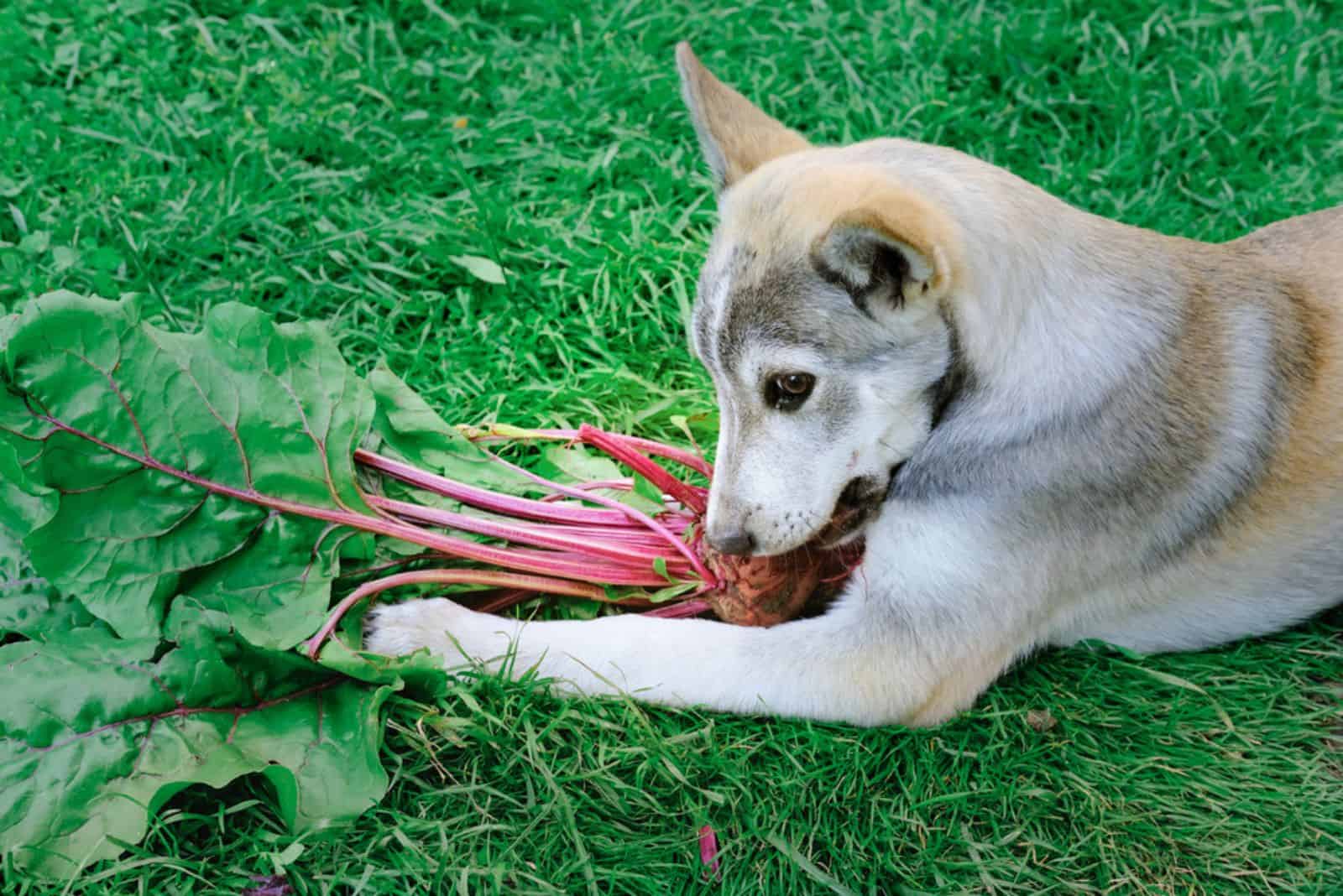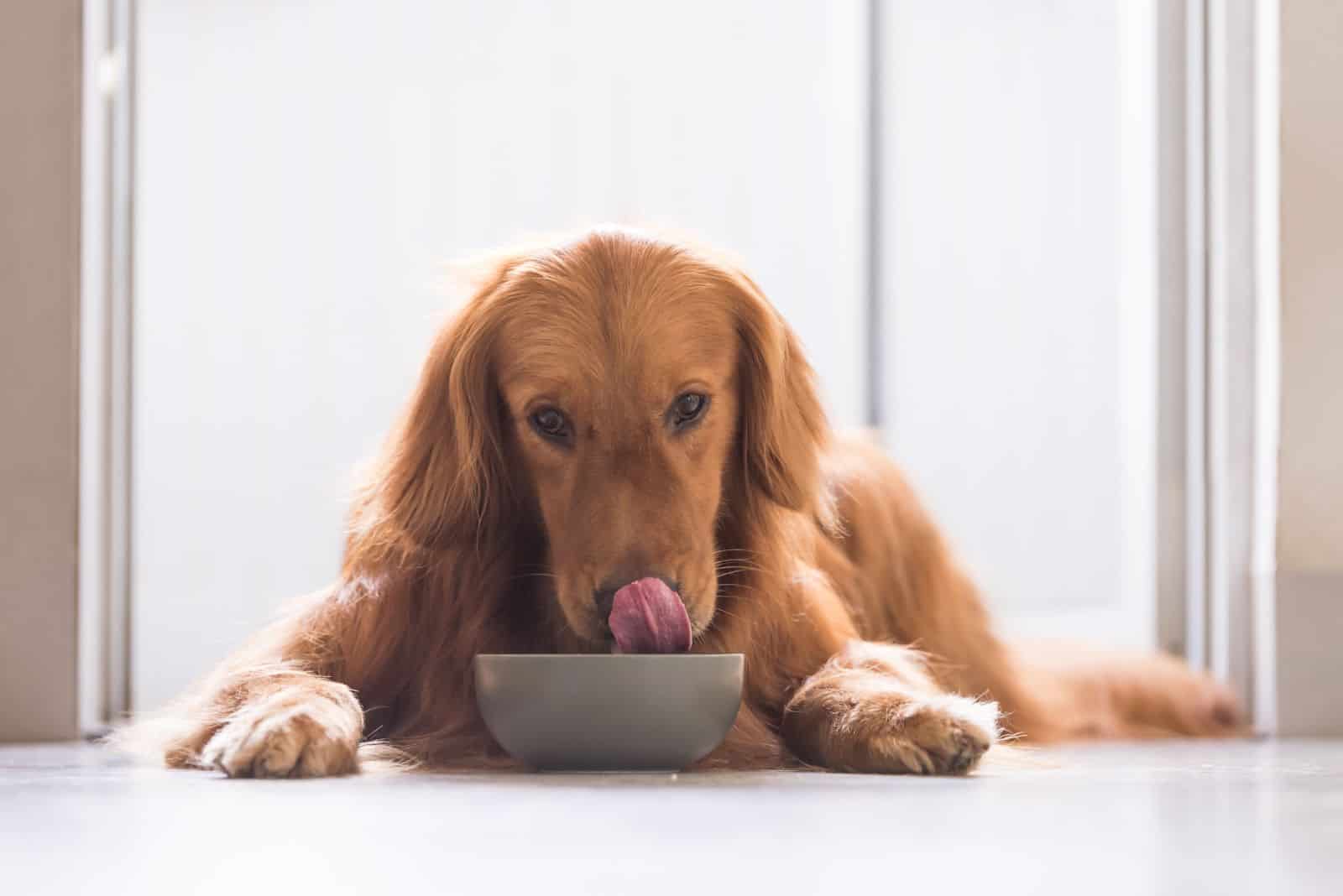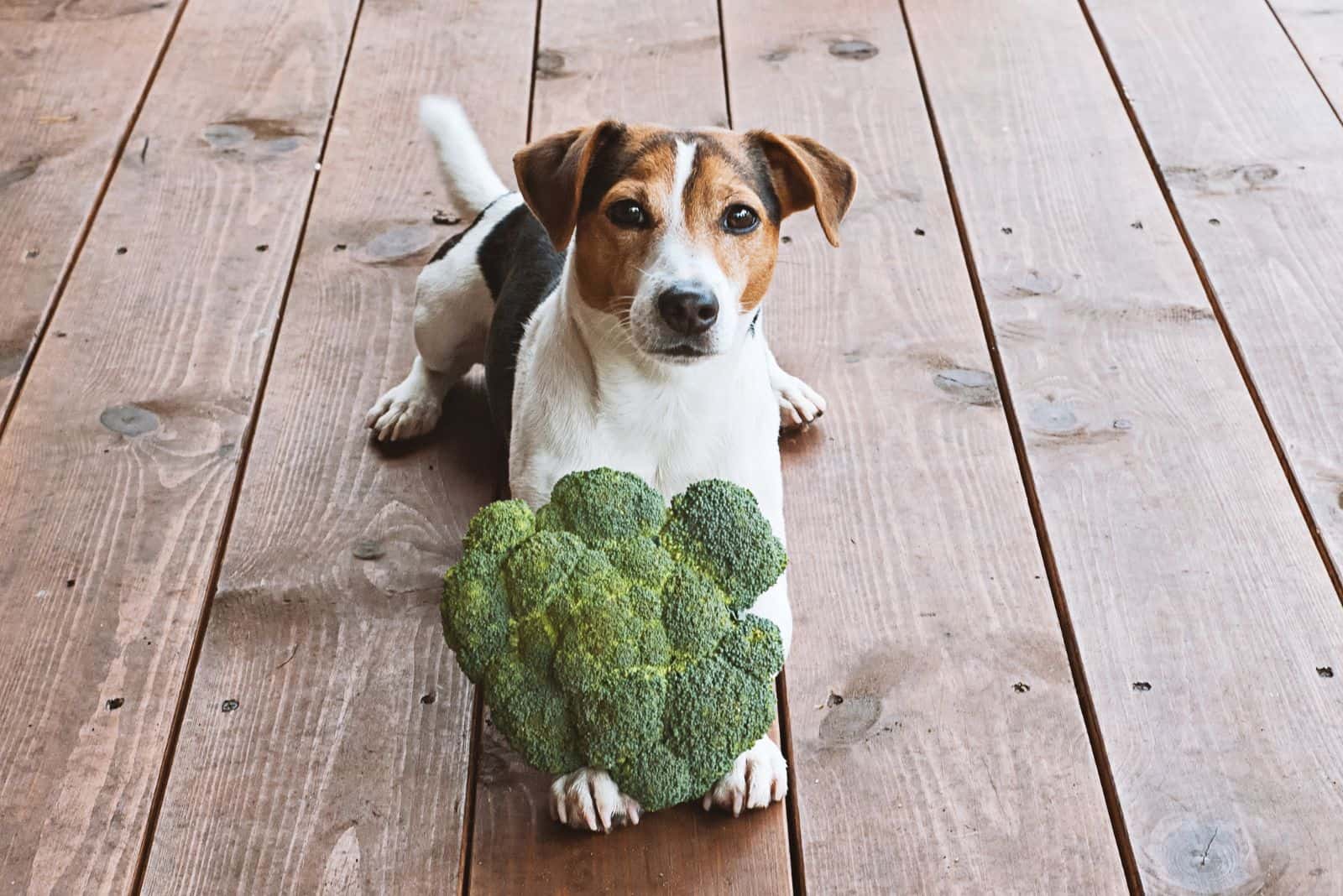Dogs, much like humans, are prone to all kinds of health issues and one of the deadliest, albeit rarer ones is cancer, and most cases often have nutrition as a problem factor, but is there food that can prevent cancer in dogs?
Of course there’s food that can prevent cancer in dogs, plenty of it in fact. That said, it’s not a cure, but a prevention method which will only reduce the chances of cancerous growths. You should still get him regular screenings if he’s a breed prone to it.
If you’re suspicious that he may have it because he’s showing symptoms of a particular type of cancer, then that warrants a checkup too. You can never be too safe with these things, especially when a dog gets on in age.
And, until we find a proper cure for the problematic issue, the best we can do is keep our dog on a healthier diet and get him through regular checkups, much like we ought to do for ourselves.
Some of the better options tend to be broccoli, fish and beets, but there are plenty of others out there that you can add to his diet to help out.
To find out what some of the best choices are as well as what the standard for a healthy dog diet is, feel free to read on.
The 8 Most Efficient Foods That Can Prevent Cancer In Dogs
1. Beets

First up on the list are beets, a very good root veg with its iconic red that’s absolutely rich in nutrients.
They absorb the benefits from the soil they’re grown in and pack it in a nice and digestible package.
Firstly, they’re fiber rich and, when served with other foods, allow for all the nutrients to be absorbed properly.
On top of that, it’s an alternative source of potassium next to the great banana on top of beta carotene, folic acid and vitamin A, all fantastic nutrient options that promote a healthy metabolism and overall body.
While making your dog eat veggies alongside his regular diet may be a bit more difficult given that they have a penchant for the meats, but thankfully they’re omnivores at heart unlike their lupine ancestors.
So, you can just steam them up and slice them over the dog’s usual food and he should eat it right up. If not, then stick it together with some of the wet food options or find kibble that has beets already in it.
2. Broccoli
The second one I’ve mentioned was broccoli, an all around healthy veg that’s known to be a treasure trove of all kinds of vitamins and nutrients, the most notable of which are vitamins A and D as well as antioxidants, calcium and potassium.
It’s a great protein supplement if your dog needs one without making it all come from the meat (though the majority should still be sourced from meat).
Before kale, broccoli was known as the original superfood, so it’s no wonder that it also works well on dogs too.
Apart from the mentioned benefits, it too is a decent source of fiber and is one of nature’s natural remedies against inflammation.
The part that makes them exceptionally good cancer deterrents are the glucosinolates though as they’re known to shrink the carcinogens down and protect the overall body.
While the full effectiveness of glucosinolates is still being researched, it’s certainly one of the potential candidates to become the proper cancer killer if utilized properly.
The only real problem that broccoli entails is the fact that nobody particularly likes eating it, and it makes your dog have real nasty gas.
This can not only deter you from being in a room when he lets one rip, but the grumbling discomfort that he may feel in his stomach may make him broccoli averse.
However, the gassy part often comes from eating the ‘canopy’ of the broccoli tree, but if you just give them the tree itself without it, it should be fine (the stem).
The best method of preparation is lightly steaming them so they don’t lose their nutrients like they would from other means of preparation, and then putting them in with some meat, ideally with some chicken or fish.
3. Fish

Speaking of fish, it too is another wonderful source of cancer combatants, one in particular being omega 3 fatty acids which, while often found in quality dog food, may be needed in higher amounts if your pup ends up having a cancer scare.
It’s often found in fish oil itself which can be obtained separate or simply obtained from more oily fish and consumed in a more favorable manner.
On top of its anti carcinogenic properties, omega 3 fatty acids are important in maintaining good skin and fur quality and are often responsible for the prevention of their inflammation.
Though, it’s worth noting that that’s not the only benefit that this protein alternative to chicken and beef provides.
It contains a number of minerals which are essential for the healthy function of a dog’s organs like potassium, magnesium, iron, zinc, phosphorus and iodine.
Fish is also a decent source of a few vitamins like vitamin D3 and B2 as well, and, of course, DHA and EPA which are key nutrients for cognitive development in puppies.
As for the inclusion of fish in the meals, believe me when I say that you won’t be having any issues with a dog eating meat.
While it isn’t beef or chicken, he’ll like it just the same, though do be sure to de-bone it if need be.
Alternatively, you can just find kibble with fish as the main protein or utilize some fish oil as a form of gravy for his dry dog food.
4. Sweet Potatoes
Next up we have one of the more popular healthy and natural fiber choices often found in dog food instead of, or alongside brewer’s rice, sweet potatoes.
Though, fiber isn’t the only thing that they provide as they’re a potent source of both minerals and vitamins, namely potassium, iron, folates, thiamine, copper and magnesium for the former and vitamins B6, B9, C, D, and E as far as vitamins are concerned.
The vitamins are often considered to be the key part here in terms of anti carcinogenic properties as they’re thought to reduce chances of specific cancers manifesting.
Given their relatively sweet nature, it won’t be that hard for you to make your dog eat some.
The best method would be cooking them to make them a bit mushier but still have them contain their nutrients and mashing them over the dog’s kibble.
It makes them easier to consume too while adding some color to the dish.
5. Pitted Fruits
While not the most nutrient packed of the bunch here, pitted fruits are going to be some of the easiest ones to incorporate into a dog’s diet while still remaining healthy for him as their natural sugars are just as enticing for your dog as they are to you.
The list of these includes any fruit that has a ‘stone’ or pit in it, one of the more popular options being cherries, plums, mangoes or peaches.
Each of them have their different benefits, of course, but the main ones are high levels of fiber, iron and vitamin C, as well as the star of the show here, antioxidants.
Antioxidants do exactly as labeled and help purge the body of toxins which are often linked to a higher likelihood of cancer, helping aid in prevention.
As far as inclusion in meals goes, the most important thing to do is get the pit out of the fruit, after which you can just hand feed him the rest and your dog should devour it eagerly, no questions asked.
Though, dogs do like it if you freeze them if possible for a nice, crunchy and refreshing feel in their mouths.
6. Pumpkins

Another favored natural treat for dogs that doubles as a cancer prevention food due to its richness in beta-carotene and antioxidants.
This primarily comes from vitamin A which also gives pumpkins that rich, orange color it’s known for.
Aside from that, you’ll find other vitamins in there like vitamins B and C as well as healthy amounts of potassium.
Pumpkins also aid in digestion due to their high fiber and water content, allowing the food to go down slower and the nutrients to get absorbed with ease.
Including these in your dog’s usual diet should be a cinch too, all you really need to do is cook it to make it a bit mushier and then put it on your dog’s food.
It’ll not only make itself easier to eat in terms of texture, but will soften up the kibble itself too.
7. Coconut Oil
While coconuts themselves can be expensive or time consuming to put into a dog’s daily meals, coconut oil isn’t.
It’s a lot easier to administer and the benefits are more concentrated, though it’s quite fatty so you should resort to only small amounts.
The main benefit that’s tied to cancer prevention is the abundance of antioxidants, much like in pitted fruits, helping prevent damage from free radicals and making it easier to purge problematic toxins from the dog’s system, lowering the risk of cancer subsequently.
Other than that, it’s also filled with a lot of vitamin goodness with vitamins A, D, E and K being some of the more prevalent ones, alongside a few others.
8. Darker Berries
The final entry on this list, though by no means the only other anti-cancer food, is the dark berry group, mainly referring to black and blueberries.
Not only are they rich in fiber and vitamins C and E, but the anthocyanins which give them their darker color aid against inflammation, which, in turn, can prevent the spawn of cancerous growths on the body, or at the very least reduce its chances of doing so.
They also have antioxidants as well which aid the body in a similar manner, albeit they focus more on preventing DNA damage to cells from the aforementioned, free radicals.
And, as far as consumption is concerned, your dog is going to love them regardless of how you give them to him.
Much like pitted fruits, you can give them to him either fresh or frozen, though if you can spare the time, I recommend the latter for that added pleasure of a cool, crunchy bite with his regular meals.
What Else Constitutes A Healthy Diet In Dogs?

While I can wax poetic about this for a good while, the short version is that there are a few key things one should be on the lookout for when making a healthy canine diet:
- The Main Protein – Chicken or beef preferred, fish works too for anti-cancer purposes
- Omega 3 fatty acids – Main component in maintaining fur, skin and overall bodily health
- DHA and EPA – Proper cognitive development in pups
- Calcium and phosphorus – Proper bone development in dogs
- Chondroitin and glucosamine – Maintaining proper bone and joint health
- Probiotics and prebiotic fiber – Healthy immune system and overall gut health
- Vitamins and minerals – Good for overall bodily health
- Antioxidants – Protection from cell damage due to free radicals
There are plenty more to list on top of that, but these are your main concerns on top of the cancer scare problems.
If you need more detail about your dog in particular, I’d advise consulting a pet nutritionist or your local vet on the matter of a personalized diet for your canine companion.
In Conclusion
There is food that can prevent cancer in dogs, or at least aid in prevention and they’re quite good at it with sweet potatoes, pumpkins and fish leading the charge.
However, it’s important to note that these aren’t cures and that they can, at best, reduce the risk of cancer, but not outright stop it from occurring.
Dogs who are genetically more prone to manifesting cancerous growths still won’t be safe, which is why you shouldn’t stop with their regular screenings just because you’ve given them a shift to a healthier diet.
Other than that, be sure to consult with your dog’s veterinarian on how best to incorporate these new food options into their diets without adding too many calories into the mix.
That said, I’m sure you’ll do just fine, no matter what trouble may arise for your pooch. Until next time, pet parents.
RELATED LINKS:
